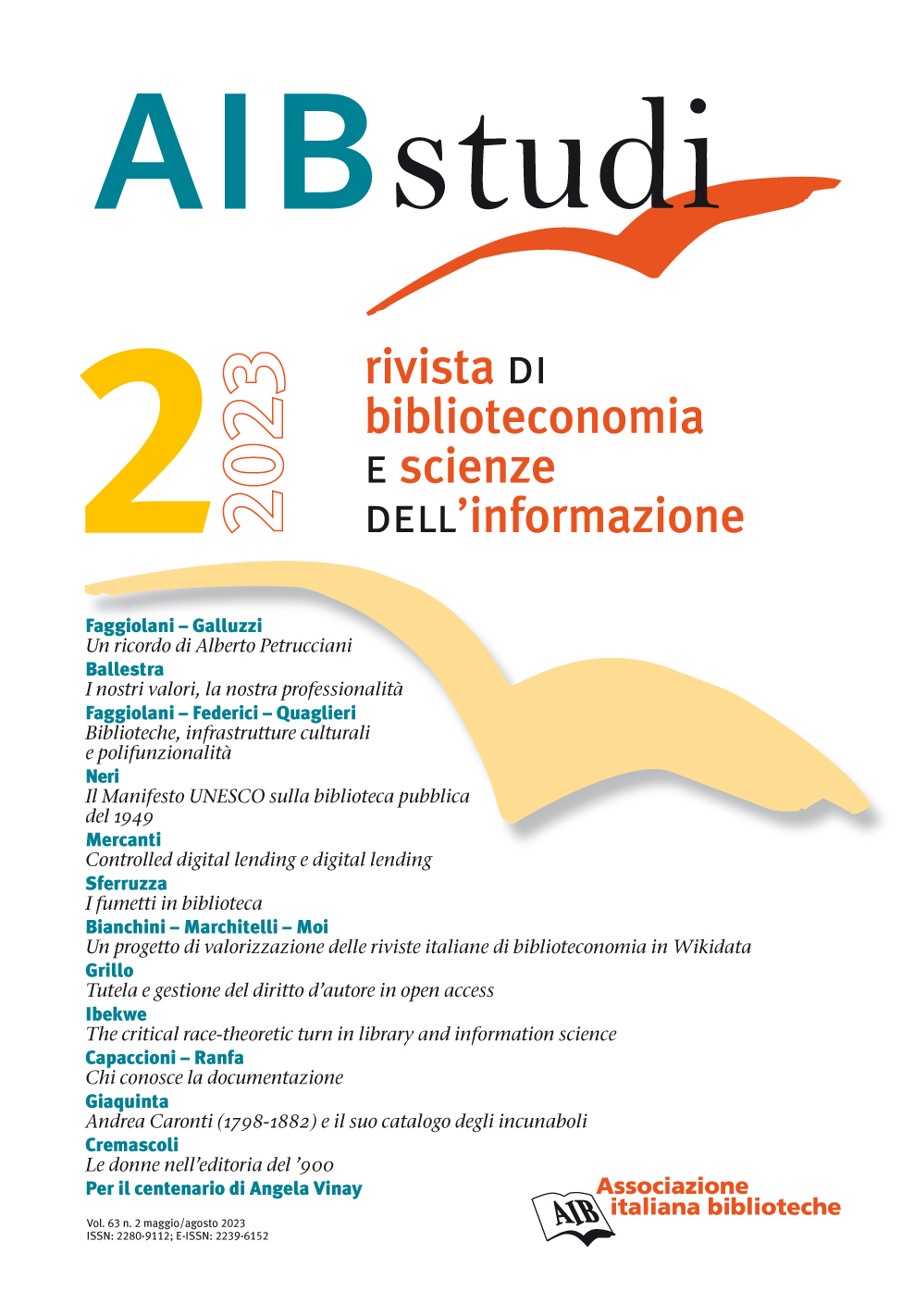Comics in libraries: a training ground for cataloguers
DOI:
https://doi.org/10.2426/aibstudi-13878Keywords:
comics, cataloguing rules, cataloguingAbstract
Comics are a steady presence both in publishing and in libraries; although their status compared to other media is no longer questioned, a re-examination of comics’ cataloguing practices may be needed. Comics are not per se different from other resources that libraries hold and cataloguing rules deal with; nevertheless, they exhibit some peculiar features. As works, comics are the inseparable result of several creative processes, each pertaining to their constituents (text and image); most comics, moreover, underwent a non-linear publishing history: cataloguing comic books and magazines calls for a few caveats. Cataloguing rules in general do not mention comics as exceptional cases, albeit comics are largely used as examples in order to explain rules in place for monographs and serials; in the United States, libraries show greater interest in comics’ cataloguing, especially regarding classification and indexing. Some specific problems arising from comics’ cataloguing are: sorting monographs from serialised comics; recognising the preferred source for the title, as well as separating title proper and subtitles; selecting relevant statements of responsibility; dealing with variants and reprints; noting manga’s reading direction. Comics provide some sort of a training ground for cataloguing since they present peculiar issues and borderline cases; amendments to cataloguing rules may be necessary to deal with some of these issues, but cataloguers may especially benefit from a rich collection of examples that depict comics’ eccentricities.
Downloads
Downloads
Published
How to Cite
Issue
Section
License
Copyright (c) 2023 Marco Sferruzza

This work is licensed under a Creative Commons Attribution-ShareAlike 4.0 International License.









